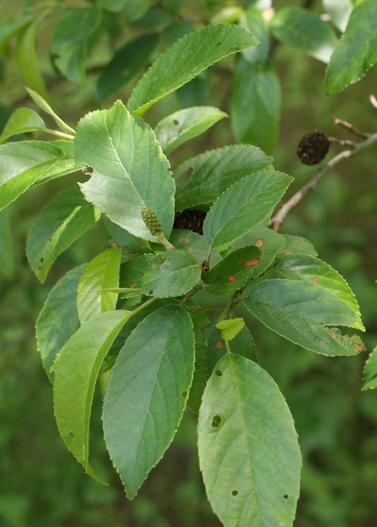Chinese Alder
(Alnus cremastogyne)
Chinese Alder (Alnus cremastogyne)
/
/

Kenraiz, Krzysztof Ziarnek
CC BY-SA 4.0
Image By:
Kenraiz, Krzysztof Ziarnek
Recorded By:
Copyright:
CC BY-SA 4.0
Copyright Notice:
Photo by: Kenraiz, Krzysztof Ziarnek | License Type: CC BY-SA 4.0 | License URL: https://creativecommons.org/licenses/by-sa/4.0 | Uploader: Kenraiz | Publisher: Wikipedia Commons


Estimated Native Range
Summary
Alnus cremastogyne, commonly known as Chinese Alder, is a fast-growing, nitrogen-fixing deciduous tree native to a variety of habitats in China, including the Sichuan, Guizhou, Shaanxi, Gansu provinces, and the middle and lower Yangtze River regions. It typically reaches a height of 20-30 feet (6-9 meters) and is known for its ability to improve soil quality, often being one of the first species to colonize areas disturbed by events such as landslides. Chinese Alder thrives in areas with annual temperatures between 15-18°C and precipitation ranging from 35 to 60 inches.
The tree is notable for its light green foliage and catkins that appear before the leaves, which are not particularly showy but are of ecological importance. In cultivation, it is valued for its rapid growth and soil-enhancing properties, making it useful for reforestation projects and erosion control. Chinese Alder is adaptable to a range of soil types, provided they are moist and well-drained, and it prefers full sun to partial shade. While not commonly used in ornamental horticulture, it can serve as a windbreak or for biomass production. Care should be taken as it can become invasive outside its native range, and it is susceptible to pests such as aphids and diseases like Phytophthora.CC BY-SA 4.0
The tree is notable for its light green foliage and catkins that appear before the leaves, which are not particularly showy but are of ecological importance. In cultivation, it is valued for its rapid growth and soil-enhancing properties, making it useful for reforestation projects and erosion control. Chinese Alder is adaptable to a range of soil types, provided they are moist and well-drained, and it prefers full sun to partial shade. While not commonly used in ornamental horticulture, it can serve as a windbreak or for biomass production. Care should be taken as it can become invasive outside its native range, and it is susceptible to pests such as aphids and diseases like Phytophthora.CC BY-SA 4.0
Plant Description
- Plant Type: Tree
- Height: 20-30 feet
- Width: 20-40 feet
- Growth Rate: Moderate
- Flower Color: N/A
- Flowering Season: Spring
- Leaf Retention: Deciduous
Growth Requirements
- Sun: Full Sun, Part Shade
- Water: Medium
- Drainage: Medium, Fast
Common Uses
Bank Stabilization, Bee Garden, Erosion Control, Low Maintenance
Natural Habitat
Native to a variety of habitats in China, including forest margins, stream banks, and disturbed areas
Other Names
Common Names: Y-tong
Scientific Names: , Alnus cremastogyne, Cremastogyne longipes,
GBIF Accepted Name: